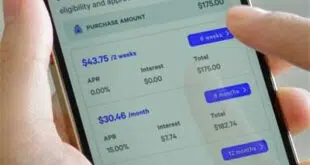Banks are gearing up to launch their own common wallet for consumers. But what value, exactly, will the new product really add?
This comes from an announcement on Early Warning Services’ Web site:
“We hear from consumers that they want to utilize online payments from their trusted financial institutions,” said [James] Anderson. “Early Warning is working closely with financial institutions to build a wallet that provides consumers a secure and easy way to pay. The wallet will also aim to deliver better business outcomes for merchants—including higher transaction approval rates and more completed sales.”
The announcement clearly states that Early Warning’s peer-to-peer payments service, Zelle, is not part of this rollout. Instead, the new wallet is designed to tokenize Visa and MasterCard debit and credit cards.
Yet, with FedNow on the horizon and The Clearing House’s Real Time Payments (RTP) service pushing further into instant payments in the United States, leaving Zelle out of the equation points to the economic and cultural barriers banks have been struggling to break past.
Indeed, this announcement from bank-owned EWS tells us that banks are still locked in to their primary business model, which runs counter to where their customers’ payment needs are heading and, therefore, represents this strategy’s core headwind. That business model has two fundamental components: risk management and interchange.
The First Mistake
According to recently reported statistics, in 2021, Zelle moved twice as much money as PayPal, or about $490 billion worth of transactions at an average ticket of about $272. This tells us two things: first, banking customers find Zelle very useful, but second, it’s utility consists of acting as a replacement for checks or cash used to pay various types of bills. It’s a closed-loop in-banking app product and, as such, is a cost center—much like ATMs, with little or no monetization opportunity.
In fairness, some banks have pushed to open Zelle up to retail payments. But others have said no because that leaves them open to higher fraud risk. Risk is the first barrier for these banks, because they are risk managers and this attitude is a key driver in the way they develop products—for good reason, since banks treasure their position of trust with customers.
Lose that trust, and you lose that customer. It’s a pretty simple equation, and one recently validated when Zelle experienced a very public problem with customer fraud losses. Lesson learned. Additionally, how is trust a differentiator against competitors that are widely trusted by consumers?
But, back to the main point. I believe this reluctance to go to the point of sale is the EWS banks’ first mistake. First to market for instant payments at the POS is going to be very important in this new payments environment, and leaving Zelle out immediately puts this new wallet at a disadvantage compared to PayPal or Apple. This is regardless of whether the EWS banks are able to pull off some kind of amazing frictionless or rewards-laden user experience that drives customers to choose them.
This narrow approach further constrains the usability of the wallet to network-branded cards, which remain extremely easy to use online. Yet, by basing the economics of the product on interchange (and in the case of ApplePay, keeping more interchange), the banks earn the income necessary to offer rewards (on credit cards) that motivate customers to spend more.
It’s unlikely that, any time in the near future, these banks will open up the wallet to include other network-branded cards, like American Express, again putting them at a disadvantage against PayPal and Apple in the short term.
This is the same business model that’s driving more and more merchants to add interchange fees onto customers’ bills, something customers are well aware of. They will be looking for a better, cheaper alternative to these cards over time. By the way, that alternative is here (think BNPL) and coming (think faster payments).
Burst the Bubble
As a consumer, how comfortable am I going to be using something like my email address as a credential to make a payment from my main checking account with a service I’ve never used before, as has been suggested in this EWS announcement? If I’m a merchant asked to integrate this new wallet type, which probably has at least one or perhaps two or more additional steps in the checkout process, what’s my motivation to enable something that increases the costs and effort associated with an old payment type, like a card?
EWS promises a better outcome for merchants, but how they back up those claims remains unclear.
If the banks are serious about offering a competitive product, why not build one? This is the time to break out of their business-model bubble and embrace the new reality of what next-generation payment products are all about—which is integrated financial services.
I just don’t see much integration here, so, once again, banks are on defense. Apple and PayPal are already way ahead of them in this regard. And, with an implementation date of sometime this year, the banks can’t be building much in the way of new technology.
But this is exactly the kind of risk banks should be taking to fend off the onslaughts on their customer base. Trouble is, they’re moving food around the plate. Instead, they need to get a new plate.
—Patricia Hewitt is principal of PG Research & Advisory Services.





